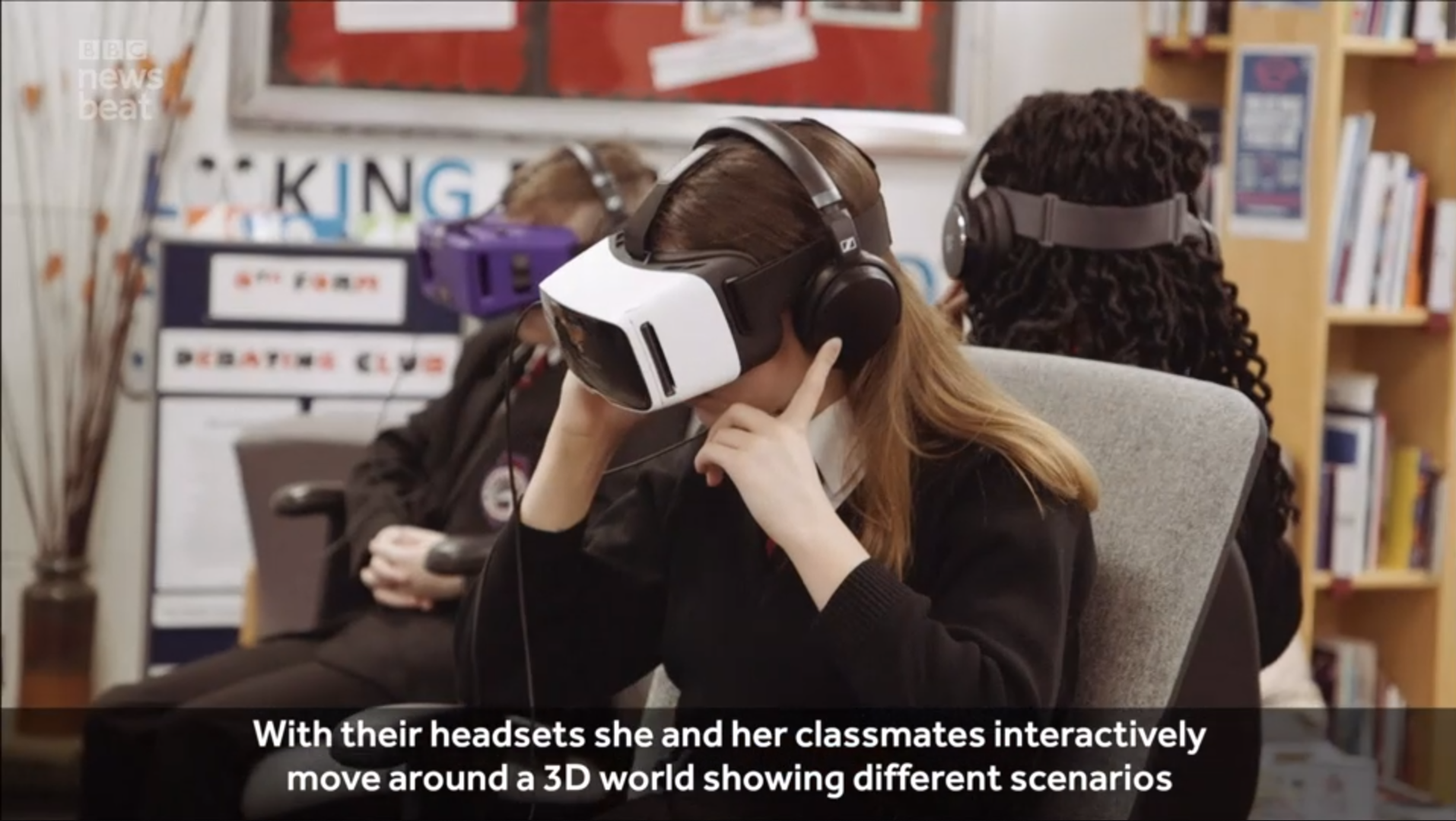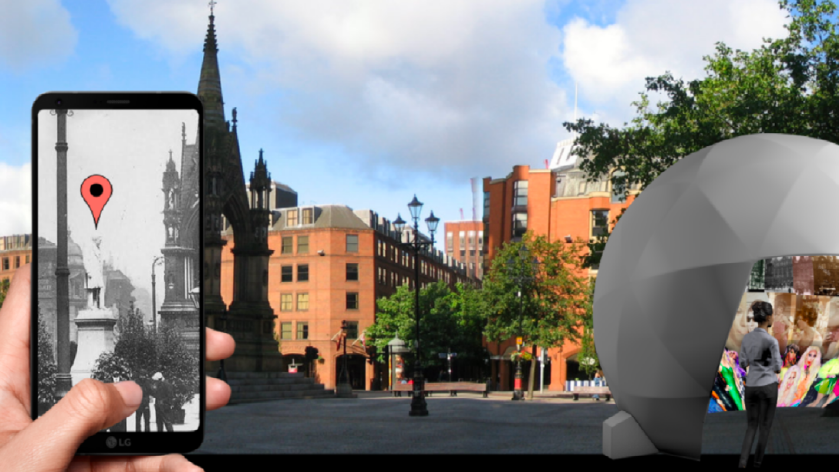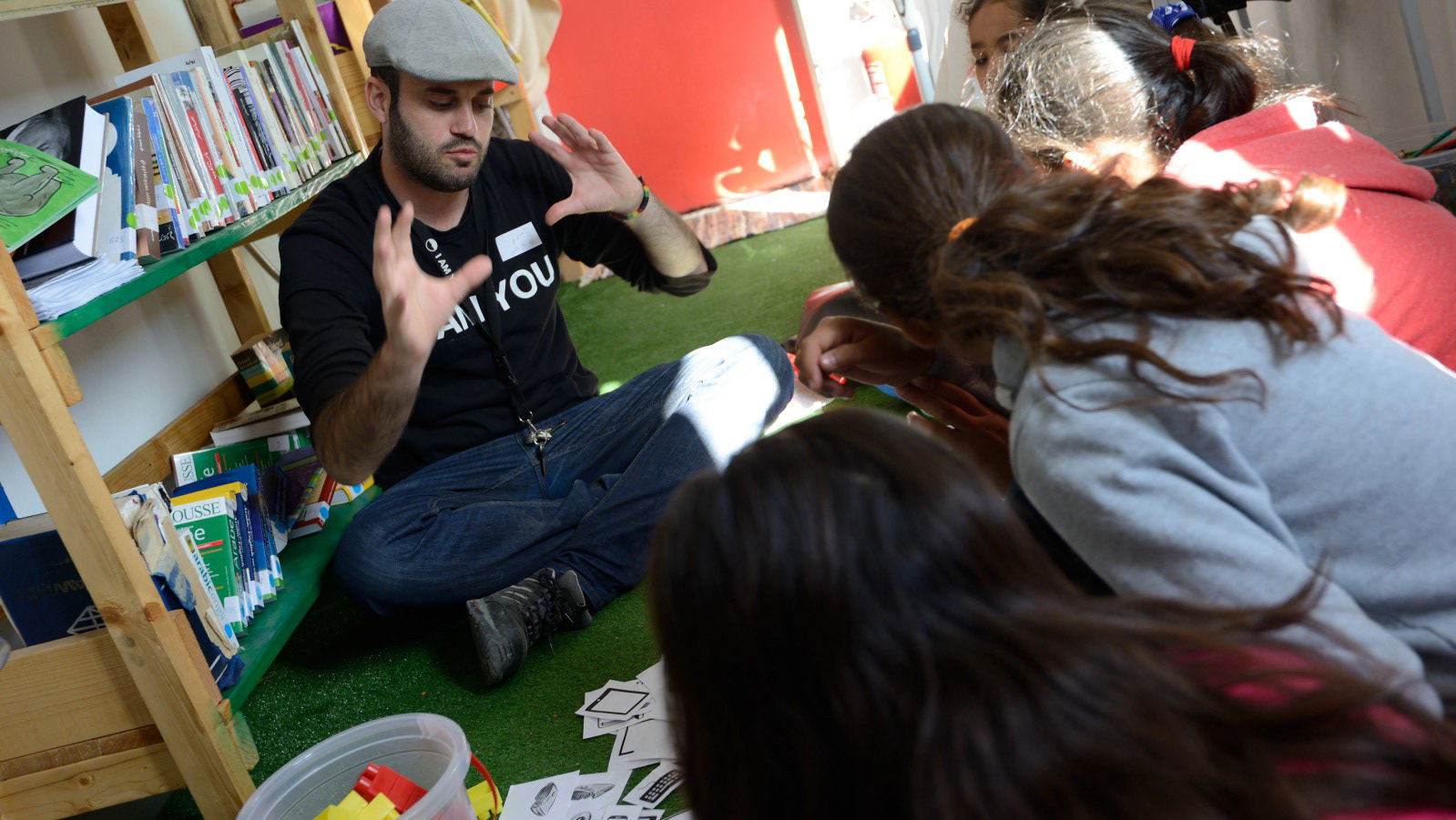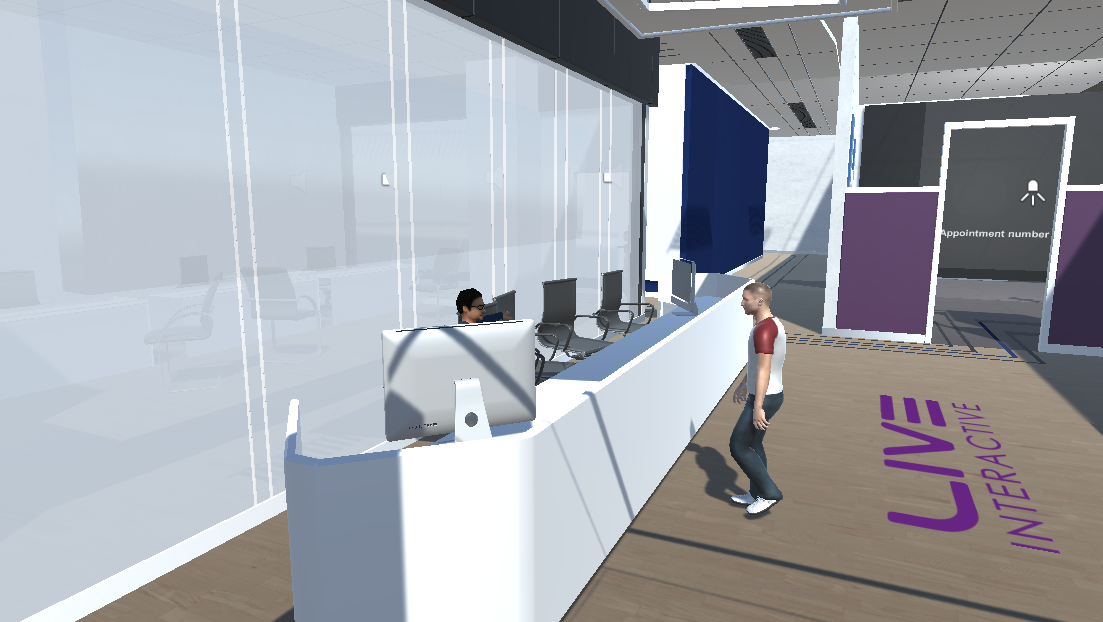Overview
This project was conducted in Greece over the period of 6 weeks between Nov and Dec 2017. While I was in Greece working on my PhD field study, I was invited by the Greek ministry of education to work in collaboration with them and 5 formal schools in Greece who needed technology system support for special education of a mix of Greek and refugee children.
The problem
The problem was that the schools were hosting students from different nationalities including refugee children during the refugee crisis. This caused many difficulties especially due to the extreme language constraints, lack of experience from pupils who have missed schools for many years during their journey and from teachers who had not worked in special education before. This created an educational environment which lacked engagement.
My role
My role was to conduct and manage the whole research in all of its phases and deliver a design for the possible products with minimal costs of production. The summary of my task was as follow:
1- Conduct a literature review and report summary regarding the emergency as a whole
2- Understand the users, their needs, and their fears
3- Work with all stakeholders on identifying the requirements of the system
4- Conducting participatory design sessions with different stakeholders
5- Develop new solutions or reuse the available solutions in a better way to fit the needs
1- Conduct a literature review and report summary regarding the emergency as a whole
2- Understand the users, their needs, and their fears
3- Work with all stakeholders on identifying the requirements of the system
4- Conducting participatory design sessions with different stakeholders
5- Develop new solutions or reuse the available solutions in a better way to fit the needs
Methods
Literature review and reports analysis
This was conducted to get an overall understanding of the challenges faced by the possible stakeholders ahead of the face to face activities
This was conducted to get an overall understanding of the challenges faced by the possible stakeholders ahead of the face to face activities
Ethnography
Ethnography was implemented in the form or observation and active participation in the context. This method aimed to enlarge the understanding of the culture, context, needs, and fears. Furthermore, another aim was to create relationships based on trust with the different stakeholders. This included me attending classes in different schools and supporting the teachers in translation and consultancy, going on the school buses with the children, meeting and interviewing children parents, and communicating with different NGOs and representatives of the Greek ministry of education.
Ethnography was implemented in the form or observation and active participation in the context. This method aimed to enlarge the understanding of the culture, context, needs, and fears. Furthermore, another aim was to create relationships based on trust with the different stakeholders. This included me attending classes in different schools and supporting the teachers in translation and consultancy, going on the school buses with the children, meeting and interviewing children parents, and communicating with different NGOs and representatives of the Greek ministry of education.
Interviews
Interviews started after two weeks of the ethnography to allow time for relationship building. Interviews were conducted with the teachers, children, parents, MOE representatives, and other stakeholders. The aim of the interviews was to achieve an understanding of the requirements and system objectives, and how they can be implemented.
Participatory design workshops
PD workshops were conducted with children and teachers, separately and together to identify the system requirements, and how it could operate.
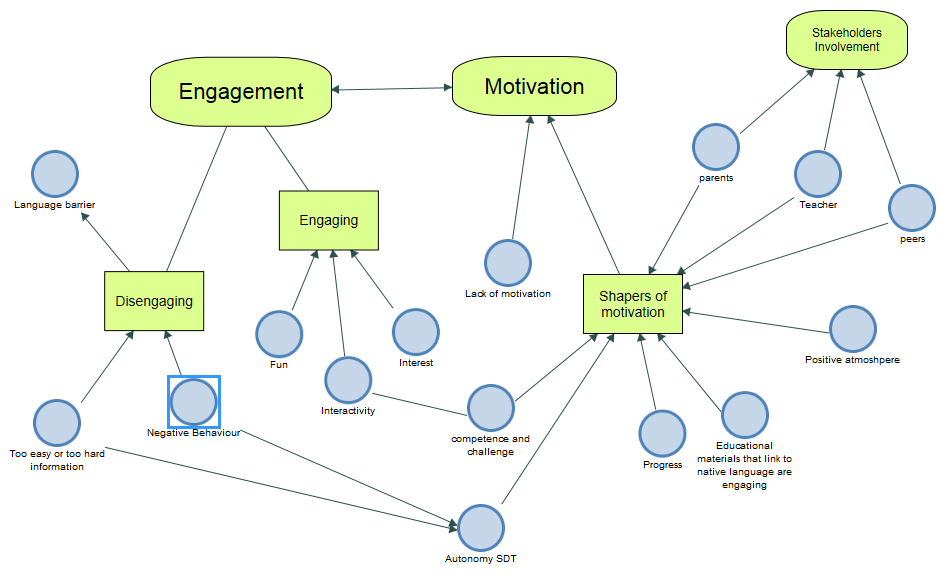
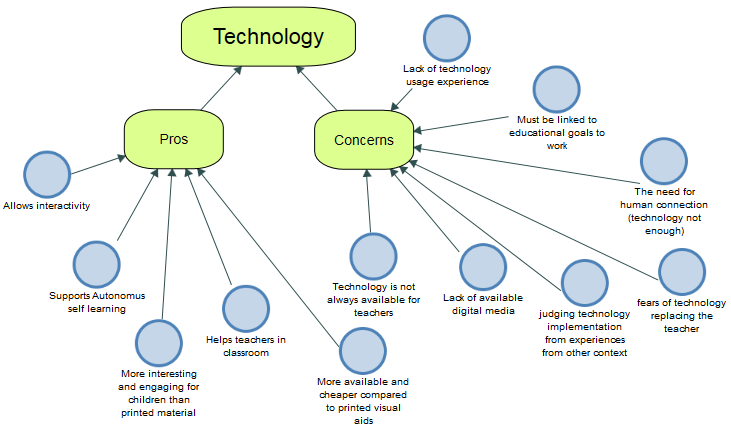
Challenges (examples)
Conflicting requirements:
The biggest challenge was that different stakeholders had different requirements for the systems. Mainly, the Greek stakeholders wanted to push for teaching Greek literacy, whereas the children and their parents wanted to focus on English and or the languages of the countries that they are supposed to relocate to. This was analysed as a main challenge of engagement as children and their parents (who shape and influence children motivation according to research) could not see any purpose of education in a language which they probably are not going to use.
This challenge required lots of work on the negotiation between different stakeholders over a few weeks, I focused on establishing a mutual learning environment where each group of stakeholders understand the other groups and see where they are coming from. In the end, the Greek part agreed to including more English, German, and French lessons. On the other hand, I worked with the teachers on creating school activities that foster friendship between refugee children and the Greek children and the Greek teachers. The relationship built between the students and the teachers, alongside their new Greek friends, increased the interest of learning Greek.
Underlying requirements:
Requirements are not always easy to find straight away. For examples, when discussing the challenges with the teachers, most of the challenges were regarding students’ behaviour as the main problem which require a solution. However, it was not expected that we create technology systems that directly tackles behavioural problems. But when the discussion with the teachers were triangulated with the observation notes, it was noted that the behavioural problems are mainly related to the lack of engagement caused by the language barrier, lack of interaction, and lack of interest. The observation notes showed that the students are showing better behaviour when they are showed pictures of things (since pictures are easy to understand unlike words in a foreign language) . Furthermore, the notes showed that the showed that the students also show better behaviour when they are showed videos on the projector, and even better behaviour when they are asked to go to the projector screen and point something on the board (participation).
All of this led to a constructive group discussion where it we realized that the system requirement should focus on visual materials, multimedia, and interaction which indirectly would resolve the behavioural difficulties. All of this was later confirmed in the discussion with the children where the children designs showed exactly the same results (see below).
All of this led to a constructive group discussion where it we realized that the system requirement should focus on visual materials, multimedia, and interaction which indirectly would resolve the behavioural difficulties. All of this was later confirmed in the discussion with the children where the children designs showed exactly the same results (see below).
Technology experience:
Another challenge was that teachers had very little experience in understanding the educational technology systems capabilities. This limited the participatory design activities with them and required a different phase of mutual learning. In this phase, I explored many technical equipment with the teachers to explain to them how they operate. But at the same time, this phase was conducted in a way that fostered neutrality in my communications with them to avoid pushing them towards any specific technology. The communication was mainly in the forms of exploration avoiding causing any bias since I was seen by them as a technology expert and the participants may expect me to only suggest the right technical solutions.
Design examples
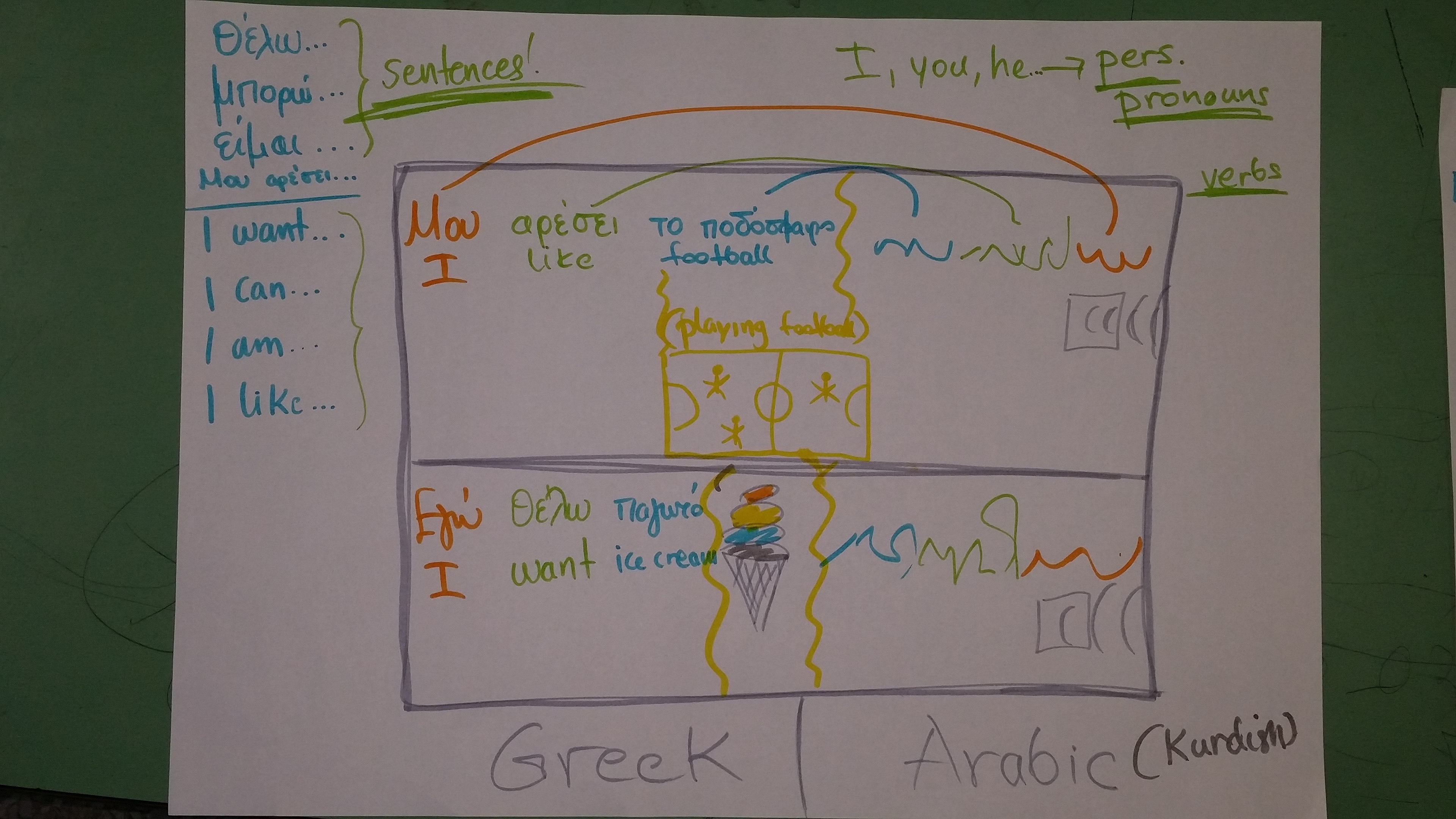
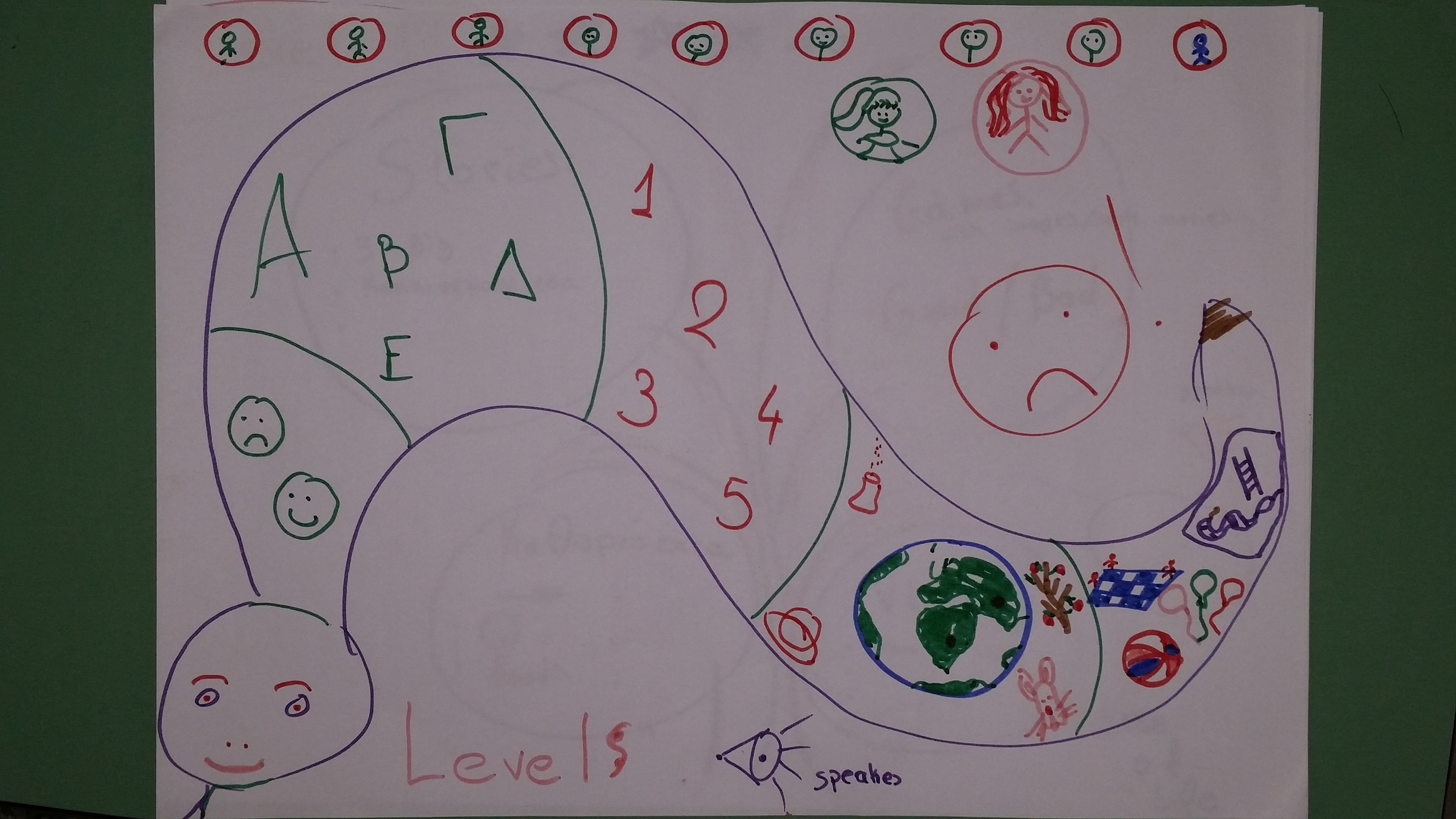
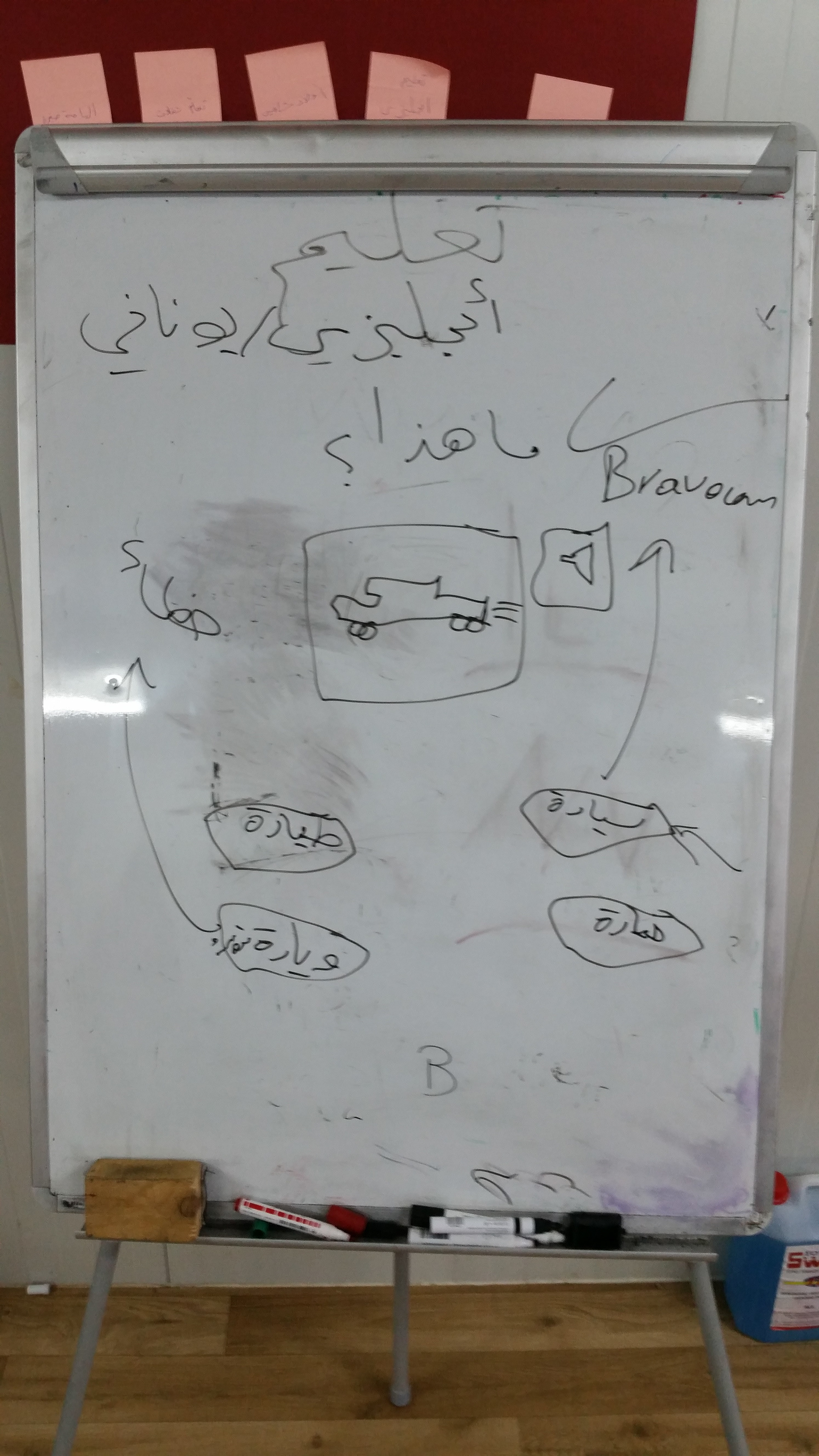
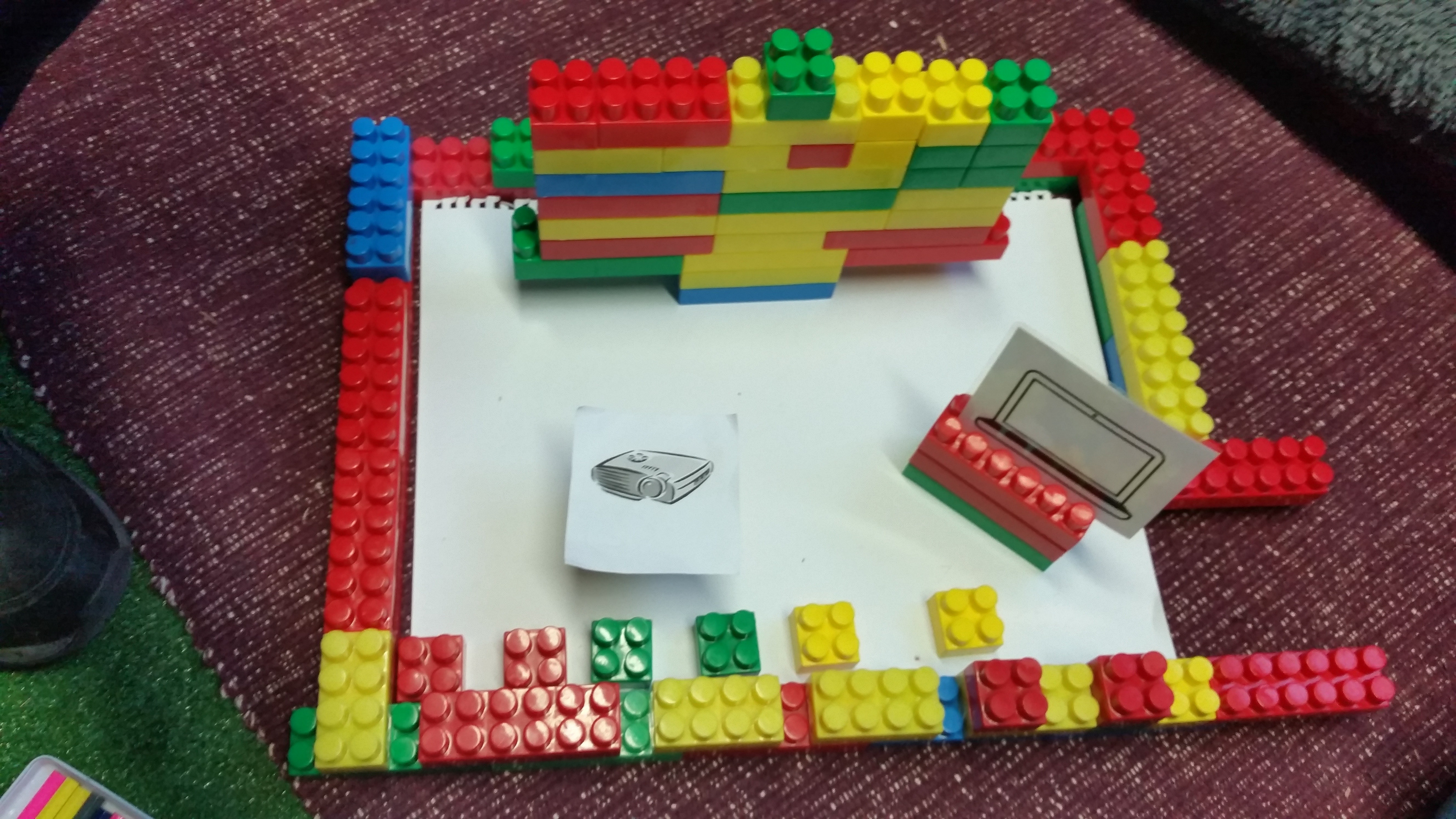
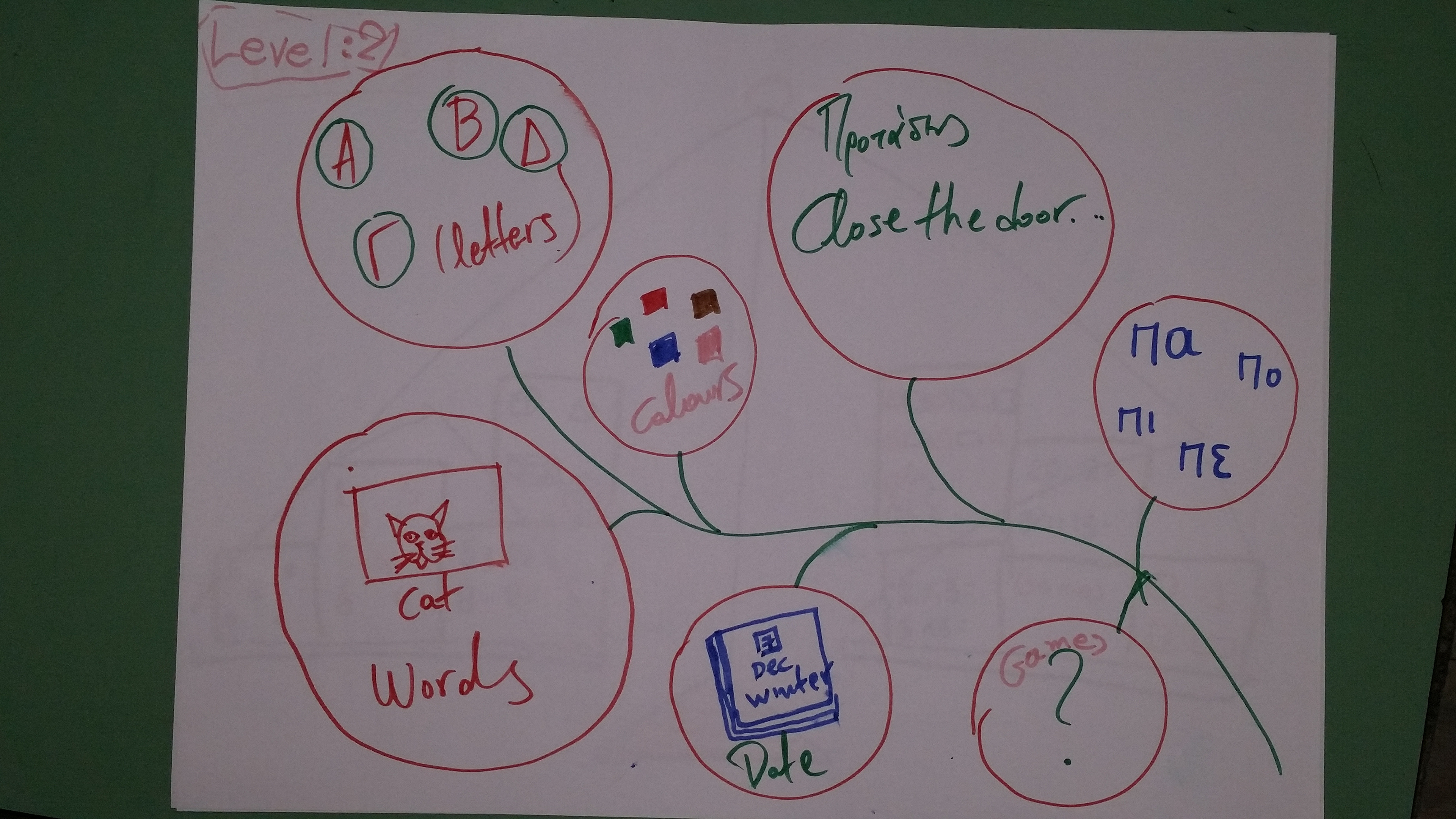
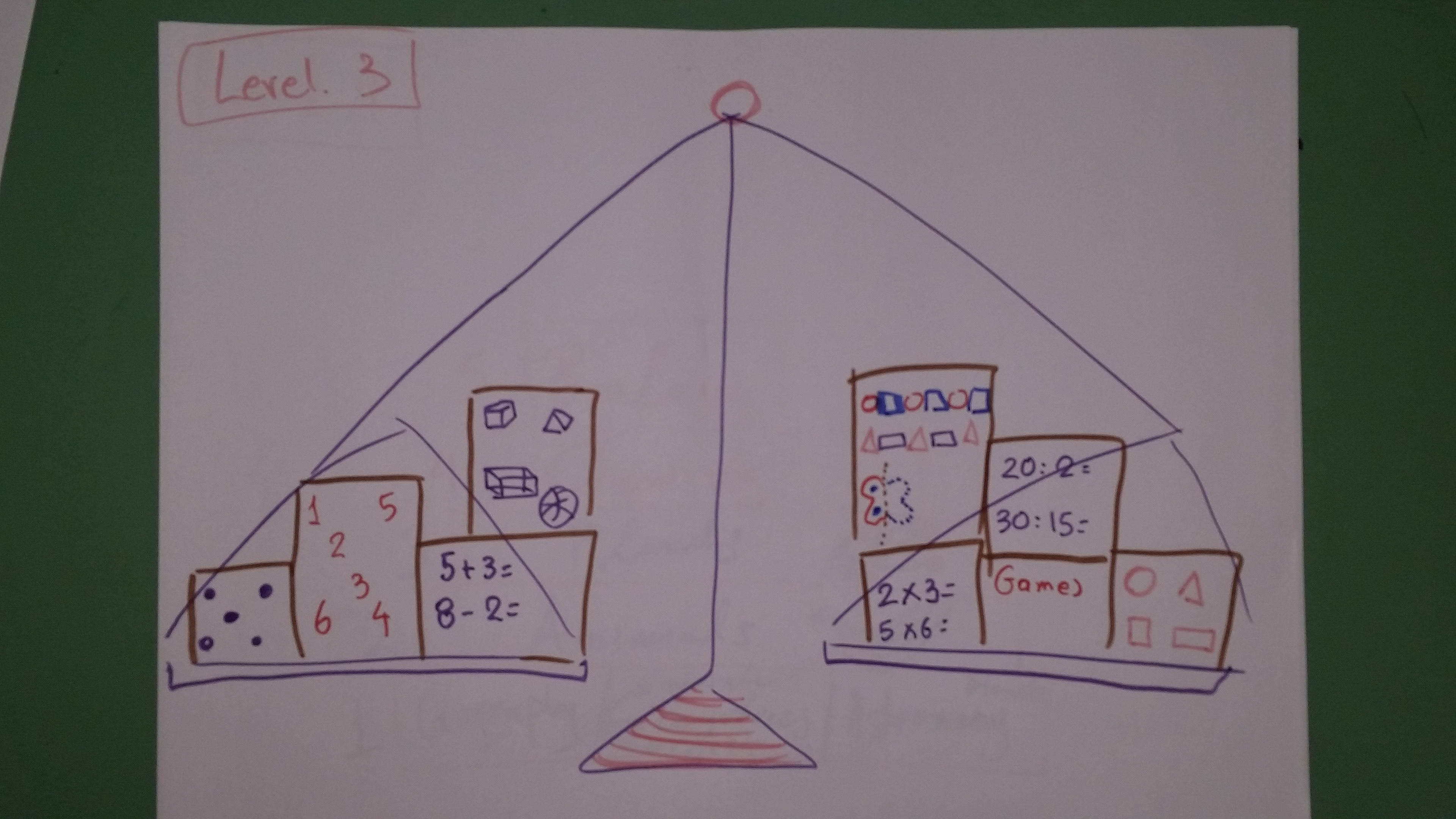
Implementation
The project budget and time limitations did not support creating new systems. However, I have conducted some workshops with the teachers showing them how they can create an outcome that is very similar to the designs made by them and their pupils using Microsoft PowerPoint, YouTube, and some android apps that can be ran on the teachers laptop using an Android simulator engine.
The data resulted from this project was later used in my PhD study to form a design process for technology systems for the context of displacement.

